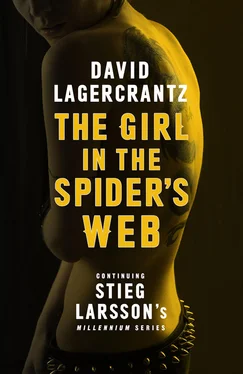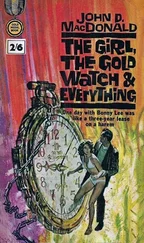“What?”
“That my old comrade-in-arms has also been at the story.”
“The one with a capital S?”
“The very one.”
“Well, that does sound promising,” Berger said, and stepped out of the bath, naked and beautiful.
20. xi, Evening
August was kneeling on the checked floor in the bedroom, looking at a still-life arrangement with a lit candle on a blue plate, two green apples and an orange which his father had set out for him. But nothing was happening. August stared emptily at the storm outside and Balder wondered: Does it make sense to present the boy with a subject?
His son only had to glance at something for it to be embedded in his mind, so why should his father of all people choose what he was supposed to draw? August must have thousands of images of his own in his head. Maybe a plate and some pieces of fruit were as wrong as could be. Once again Balder asked himself: Was the boy trying to convey something in particular with his traffic light? The drawing was no casual little observation. On the contrary, the stop light shone like a baleful glowering eye, and maybe — what did Balder know? — August had felt threatened by the man on that pedestrian crossing.
Balder looked at his son for the umpteenth time that day. It was shameful, wasn’t it? He used to think that August was simply weird and unfathomable. Now he wondered if he and his son were not in actual fact alike. When Balder was young, the doctors did not go in so much for diagnoses. In those days, there was a far greater tendency to dismiss people as being odd. He himself had definitely been different from other children, much too serious — his facial expression never changed — and no-one in the school playground thought he was much fun. Nor did he find the other children particularly entertaining either — he sought refuge in numbers and equations and avoided talking more than he was required to.
He would probably not have been considered autistic in the same sense as August. But nowadays they probably would have stuck an Asperger’s label on him. He and Hanna had believed that the early diagnosis of August would help them, yet so little had been done, and it was only now, now that his son was eight, that Balder discovered the boy had a special mathematical and spatial talent. How come Hanna and Westman had not noticed?
Even if Westman was a bastard, Hanna was fundamentally a sensitive and good person. Balder would never forget their first meeting. It was an evening function of the I.V.A., the Royal Swedish Academy of Engineering Sciences, at Stockholm’s Rådhuset, where he was being given some prize that he cared nothing about. He had spent a boring evening longing to get home to his computer when a beautiful woman whom he vaguely recognized — Balder’s knowledge of the world of celebrity was limited — came up to him and started to talk. Balder still thought of himself as the nerd from Tappström school who got nothing but contemptuous looks from the girls. He could not understand what a woman like Hanna saw in him. At the time — as he was soon to find out — she was at the height of her career. But she seduced him and made love to him that night like no woman had done before. Then followed maybe the happiest time in his life and yet... the binary codes won out over love.
He worked until the marriage fell apart. Lasse Westman arrived on the scene and Hanna went downhill and probably August did as well, which should of course have made Balder wild with fury. But he knew that he too was to blame. He had bought his freedom and not bothered about his son and perhaps what was said during the custody hearing was true, that he had chosen the dream of artificial life over that of his own child. What a monumental idiot he had been.
He got out his laptop and went on Google to learn more about savant skills. He had already ordered a number of books, and in his usual way meant to teach himself everything there was to know. No damn psychologist or educationalist would be able to catch him out and tell him what August needed at this point. He would know that better than any of them and so he continued searching until his attention was caught by the story of an autistic girl called Nadia.
What happened to her was described in Lorna Selfe’s book Nadia: A Case of Extraordinary Drawing Ability in an Autistic Child and in Oliver Sacks’ The Man Who Mistook His Wife for a Hat . Balder read in fascination. It was a gripping story and in many ways there were parallels. Like August, Nadia had seemed perfectly healthy when she was born, and only gradually did her parents realize that something was amiss.
The girl did not start speaking. She did not look people in the eye. She disliked physical contact and did not respond to her mother’s smiles or attempts at communication. She was for the most part quiet and withdrawn and compulsively tore paper into narrow strips. By the time she was six she had still not spoken a word.
Yet she could draw like Leonardo da Vinci. Already at the age of three, and out of the blue, she had begun to draw horses. Unlike other children she did not start with the entire animal, but instead with some little detail — a hoof, a rider’s boot, a tail — and the strangest thing of all was that she drew fast. In a terrific hurry she put together the parts, one here, one there, until she had a perfect whole, a horse which galloped or walked. From his own efforts when he was a teenager Balder knew how exceptionally difficult it is to draw an animal in motion. However hard you try, the result is unnatural or stiff. It takes a master to tease out the lightness in the movements. Nadia was a master already at the age of three.
Her horses were like perfect stills, drawn with a light touch, and obviously not the result of any long training. Her virtuosity burst out like a breaking dam, and that fascinated her contemporaries. How was it possible for her to leapfrog centuries of development in the history of art with just a few quick hand movements? The Australian specialists Allan Snyder and John Mitchell studied the drawings and in 1999 presented a theory, which has gradually won general acceptance, to the effect that we all have an inherited capacity to reach that level of virtuosity, but that in most of us it is blocked.
If we see a football, for example, we do not immediately understand that it is a three-dimensional object. Instead, the brain processes a series of details at lightning speed: the way in which shadows fall and the differences in depth and nuance, from which it then draws certain conclusions about shape. We are not conscious of this. But it requires an examination of the separate parts before we can register something as simple as the fact that what we see is a ball and not a circle.
It is the brain which then produces the final form and, when it does, we no longer see all the detail we first registered. We cannot see the trees for the wood, so to speak. But what struck Mitchell and Snyder was that, if only we could reproduce the original image in our minds, we would be able to see the world in an entirely new way, and perhaps even recreate it, as Nadia had done without any training whatsoever.
Nadia saw the myriad details before they had been processed, which is why she began each time with an individual part, such as a hoof or a nose, because the totality as we perceive it did not yet exist in her mind. Balder found the idea appealing, even if he saw a number of problems with the theory, or at least had a number of questions.
In many ways this was the sort of original thinking he always looked for in his research: an approach which took nothing for granted but looked beyond the obvious, down to the small details. He grew more obsessed with the subject and read on with increasing fascination until, quite suddenly, he shuddered and even cried out loud, staring at his son with a stab of anxiety. It had nothing to do with the research findings, rather with the description of Nadia’s first year at school.
Читать дальше












